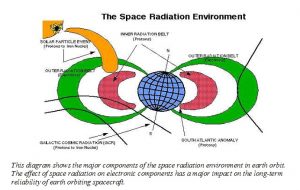 On February 18, 2016 NASA announced the selection of RadFxSat-2, the Space Radiation Effects CubeSat, for participation in NASA’s CubeSat Launch Initiative. RadFxSat-2 (Fox-1E) is another partnership opportunity between Vanderbilt University ISDE and AMSAT, similar to RadFxSat (Fox-1B) which is scheduled to launch in January 2017. Vanderbilt University, with cooperation from AMSAT, submitted the RadFxSat-2 CSLI proposal in November 2015.
On February 18, 2016 NASA announced the selection of RadFxSat-2, the Space Radiation Effects CubeSat, for participation in NASA’s CubeSat Launch Initiative. RadFxSat-2 (Fox-1E) is another partnership opportunity between Vanderbilt University ISDE and AMSAT, similar to RadFxSat (Fox-1B) which is scheduled to launch in January 2017. Vanderbilt University, with cooperation from AMSAT, submitted the RadFxSat-2 CSLI proposal in November 2015.
Out of 21 proposals, NASA is recommending 20 for participation in the CSLI opportunity. RadFxSat-2 is prioritized #1 out of the 20 selected and has been offered an opportunity for a launch date. The opportunity is being evaluated by Vanderbilt University and AMSAT to determine if it meets our mission and orbital parameters.
RadFxSat-2 (Fox-1E) will carry a radiation effects experiment similar to RadFxSat (Fox-1B) but will study new FinFET technology.
The Fox-1E spacecraft bus will be built on the Fox-1 series but will feature a linear V/U (Mode J) transponder “upgrade” to replace the standard FM repeater which Fox-1A through D have carried. The downlink will feature a 1200 bps BPSK telemetry channel to carry the Vanderbilt science in addition to a 30 kHz wide transponder for amateur radio use.
Further details of the mission and timeline will be published as they become available and are cleared for public release.
